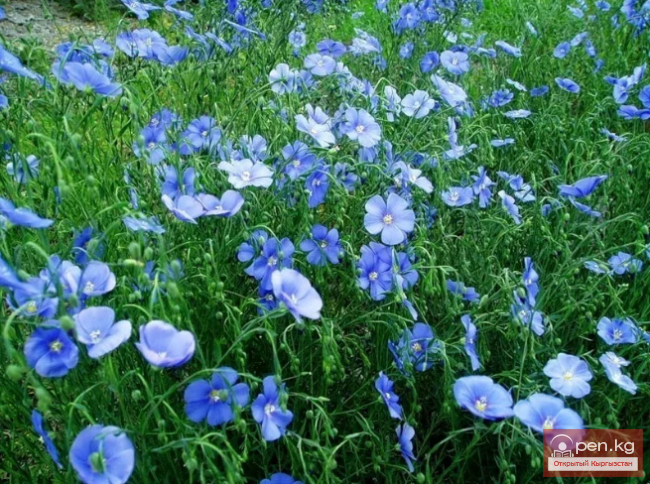
FIBROUS PLANTS
The most valuable fibrous plants in Kyrgyzstan are cultivated species — cotton, flax, kenaf, hemp, and others. As for wild fibrous plants, they are extremely rare in nature and produce fibers of rather low quality. The fibers of wild species are mainly used for weaving baskets, bags, ropes, twine, and burlap. Sometimes they are woven into mats (berdanas), hats, and other household items. Weaving is primarily done by private entrepreneurs. For weaving, reeds, bulrush, and other plants are used. However, their growths in the nature of Kyrgyzstan are insignificantly small.
Reed. Commonly referred to as bulrush, although it is a typical grass. For weaving, the leaves and young stems of the reed are used. They are made into bags, mats, and baskets. Currently, there are few reed thickets left. Only in the Chui and Talas valleys, and in some places in the Issyk-Kul basin, small stands of it have survived.
Bullrush. Its stems and leaves are also used to weave mats and baskets. However, in nature, bulrush occupies insignificantly small areas along riverbanks and lakes.
Wild Hemp. It is a fibrous plant that infests fields, gardens, orchards, and groves. However, currently, it is only occasionally used for weaving ropes.
Common and Dioecious Nettle. They also contain fibers. In the past, ropes were made from them.
Wild Mallow, Khathma. Contains fibers suitable for making ropes and twine.
Licorice. Contains stiff fibers in its stems, which can be used for making ropes and coarse packaging fabric.
Flax with Different Leaf Shapes. Contains very strong fibers in its stems. It grows in meadow-steppes and has beautiful pink flowers. The local population makes ropes from the fibers of this flax.
Perennial Flax. Rarely found in meadow-steppes. It is hardly used, but both types of flax may be of interest to breeders.
Thus, the flora of Kyrgyzstan is poor in fibrous plants that could be of significance for industrial use. It should be noted that flax with different leaf shapes and perennial flax deserve close attention as promising wild fibrous plants that can be successfully used for breeding work to develop new, more valuable varieties of fibrous plants that can be cultivated in dryland among meadows and steppes, where these two types of flax grow in natural conditions.






















































